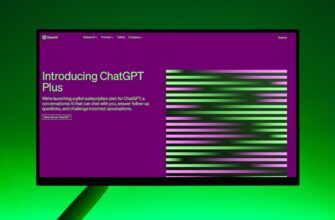## Introduction
Looking for a low-risk way to grow your Ethereum holdings? Liquidity mining ETH through Kraken Staking offers a secure entry point into decentralized finance (DeFi) rewards without the typical complexities. This guide breaks down how Kraken’s institutional-grade platform simplifies earning staking yields on Ethereum while minimizing exposure to smart contract risks and volatile impermanent loss. Discover why this approach has become a top choice for cautious crypto investors.
## What Is Liquidity Mining?
Liquidity mining involves providing cryptocurrency assets to decentralized exchanges (DEXs) or protocols to facilitate trading. In return, users earn rewards – typically in tokens – for contributing to market liquidity. Unlike traditional staking, liquidity mining often requires pairing assets (like ETH and a stablecoin) in liquidity pools. Key characteristics include:
– Rewards generated from trading fees and protocol token distributions
– Requires locking funds in smart contracts
– Returns fluctuate based on pool activity and token values
## Ethereum Staking Explained
Ethereum transitioned to Proof-of-Stake (PoS) in 2022, replacing energy-intensive mining with staking. Validators lock ETH to propose and attest blocks, earning rewards for securing the network. Kraken Staking simplifies participation by:
– Handling validator operations and infrastructure
– Eliminating the 32 ETH minimum for solo staking
– Offering automatic reward compounding
## Why Kraken for Low-Risk ETH Liquidity Mining?
Kraken transforms high-risk DeFi liquidity mining into a secure, user-friendly experience. Here’s why it stands out:
– **Institutional Security**: 95% of assets stored in offline cold storage with rigorous audits
– **Zero Smart Contract Exposure**: Unlike decentralized protocols, Kraken manages all technical operations internally
– **No Impermanent Loss**: Staked ETH isn’t paired with other assets, avoiding value imbalances
– **Regulatory Compliance**: Licensed across major jurisdictions including US and UK
– **Simplified Taxes**: Consolidated tax reporting for rewards
## How to Liquidity Mine ETH on Kraken: 4 Simple Steps
Follow this straightforward process to start earning:
1. **Fund Your Account**: Deposit ETH into your Kraken account via bank transfer, crypto deposit, or card purchase
2. **Navigate to Staking**: Select ‘Earn’ from the dashboard and choose Ethereum from the staking options
3. **Stake Your ETH**: Enter the amount to stake (no minimum) and confirm the transaction
4. **Earn Rewards**: Receive staking yields directly in your account every 1-2 days
## Low-Risk Advantages: Kraken vs. Traditional Liquidity Mining
| Feature | Kraken ETH Staking | Traditional DeFi Mining |
|———————–|————————–|————————-|
| Smart Contract Risk | None (managed internally)| High |
| Impermanent Loss | Not applicable | Significant risk |
| Minimum Investment | Any amount | Often high ($1k+) |
| Technical Knowledge | Beginner-friendly | Advanced required |
| Reward Consistency | Predictable APY | Highly volatile |
## Understanding Potential Returns
Kraken currently offers 3-5% APY on ETH staking, paid in ETH. Rewards depend on:
– Network participation rates
– Ethereum protocol updates
– Kraken’s service fee (15% of rewards)
Returns auto-compound, and you can unstake with no lock-up period after the Ethereum network’s queue (currently ~5 days).
## Mitigated Risks: Why It’s Safer
While no investment is risk-free, Kraken drastically reduces common DeFi hazards:
– **Slashing Protection**: Validator penalties for downtime are covered by Kraken
– **No Counterparty Risk**: Rewards come directly from blockchain consensus, not trading fees
– **Insurance Fund**: Protects against rare validator penalties exceeding rewards
– **Transparent Fees**: Flat 15% service fee with no hidden costs
## Frequently Asked Questions (FAQ)
### Is Kraken Staking really low risk?
Yes, for crypto standards. By eliminating smart contract exposure, impermanent loss, and technical complexity while using enterprise-grade security, Kraken offers one of the safest ETH yield options. Market volatility remains the primary risk.
### Can I unstake ETH anytime?
After initiating unstaking, ETH enters a withdrawal queue (currently ~5 days). Once processed, funds appear in your Kraken spot wallet.
### How are rewards taxed?
Rewards are typically taxed as income upon receipt. Kraken provides annual tax documents, but consult a tax professional for jurisdiction-specific advice.
### What’s the difference between staking and liquidity mining?
Staking supports blockchain security for fixed rewards. Liquidity mining provides trading liquidity for variable fees. Kraken’s ETH offering is pure staking – simpler and lower risk than liquidity mining.
### Is there a minimum investment?
No. Stake any amount of ETH, making it accessible to all investors.
## Final Thoughts
Liquidity mining ETH through Kraken Staking delivers DeFi-like yields without the high-risk pitfalls. With its blend of security, simplicity, and consistent returns, it’s an ideal starting point for investors seeking passive Ethereum growth. While returns are modest compared to aggressive DeFi strategies, the dramatically lower risk profile makes it a compelling component of any balanced crypto portfolio. Always assess your risk tolerance and diversify accordingly.








